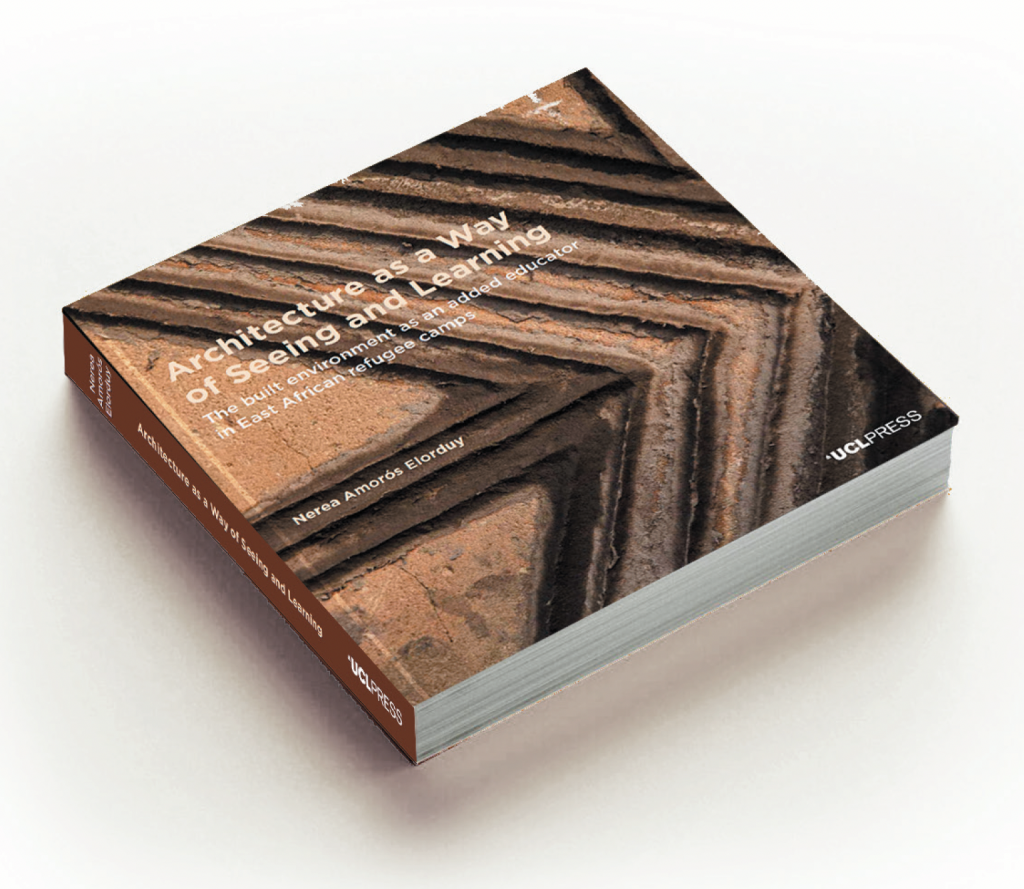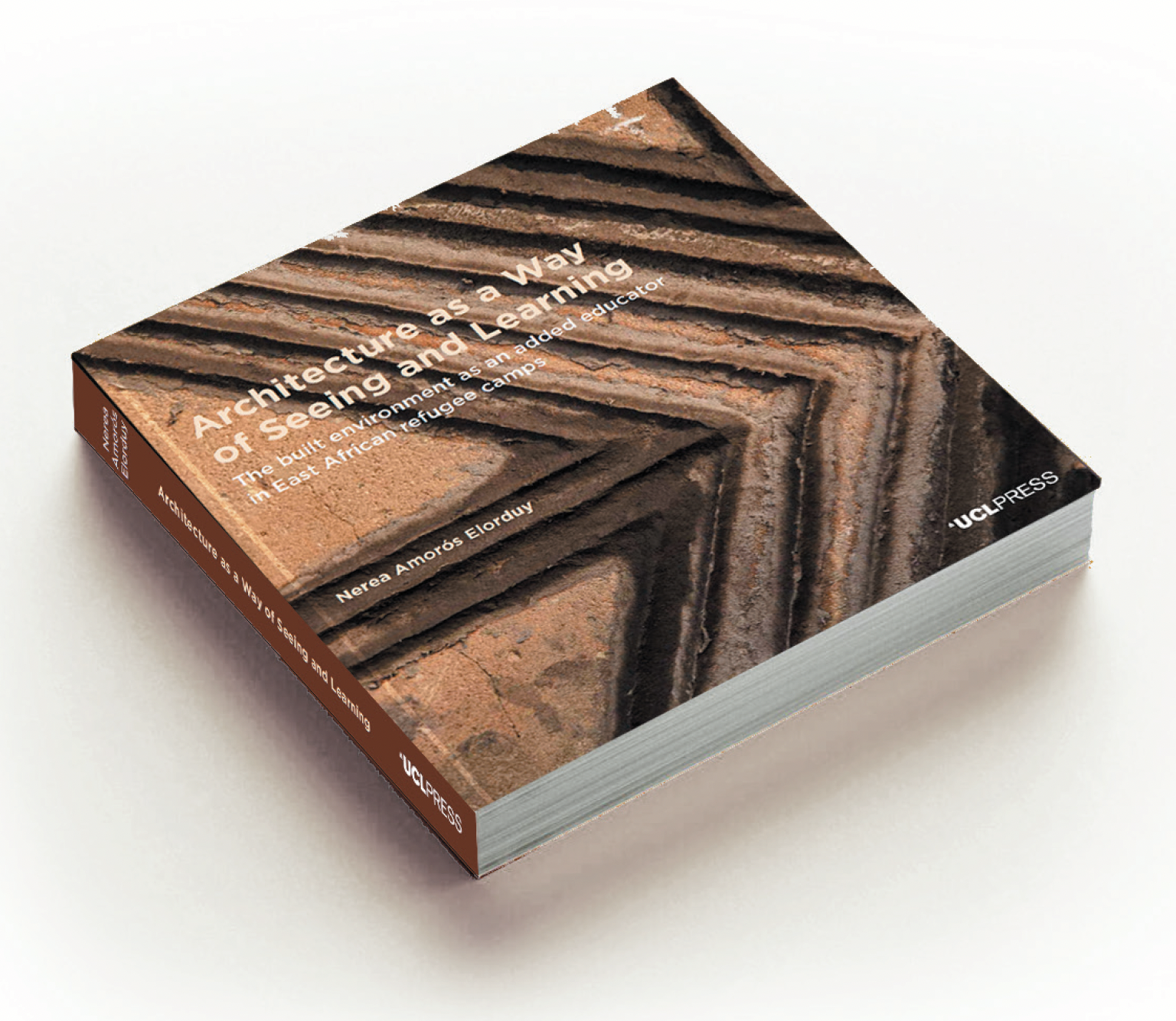Nerea Amorós Elorduy, an Alumni of our program and currently a guest professor, is founder of Creative Assemblages, a research and architecture studio based in Kampala, Uganda. This year, their work has been selected as a finalist for the international Moira Gemmill award, which is awarded by The Architectural Review and The Architect’s Journal. This award is given as part of the W Awards, which recognises women’s overall contribution to the profession, promotes role models for young women and respect, diversity and equality in architecture. Over the past ten years, she has worked extensively in East Africa on architectural projects that focus on child development and assistance for refugees. Lately, she published the book “Architecture as a Way of Seeing and Learning: The built environment as an added educator in East African refugee camps“, Published by ULC Press.

Nerea, you have a broad trajectory of over ten years in humanitarian architecture both in practice and academia. Recently, you published the book ‘Architecture as a way of seeing and learning’ and your studio, Creative Assemblages, has been selected as a finalist for the international Moira Gemmill award. These milestones in your career are significant achievements. Looking back, how do you see your efforts and trajectory in the past years, and what does this recognition mean for you?
I feel proud, of course, when you get some recognition for your work. But the kind of work we develop is team work, so it is great to see the recognition to a broad group of colleagues and collaborators who have made all these projects possible over many years. Specifically, the Moira Gemmill Award was a recognition of several years of work, so it is essential for us to see how this institution values the kind of projects we develop and the investment of time and effort.
Protracted settlements are one of the most challenging issues we will face in the upcoming decade. From your professional experience in this field working in Eastern African countries. How do you see the role of architecture in climate or post-conflict forced migration?
In your research, you state that relief aid initiatives lack awareness of the complexity and agency of the built environments they work with. What are the key elements you are introducing to develop a more nuanced approach to understanding places of encampment?
Equally, in the humanitarian field, as in any other urban context, participation is key. For a very long time, participation has been seen as a very social matter, but I see participation as the only way towards innovation. If we want to move from a paradigm of ‘man-led architecture and urban development’ to a more inclusive model that serves to build a better future, participation is crucial. The more voices we address, the more contextualized and situated we develop our work; regardless of the focus, it will be more social and, moreover, innovative and creative. I think it is essential to work with co-creation and co-design tools to develop protocols for participation – rather than claiming the word ‘participation’. We need to commit to the creative processes with the local groups to make the most out of it. It is a challenging process but very rewarding in the end.
Your PhD research at UCL delved into the extent to which encamped refugee children are learning from the built environment they live in. Can you give a brief overview of the connection between protracted settlements and learning processes?
Deepening into this question, do you think broadening this research beyond humanitarian architecture when it comes to learning and space is possible?
This is a crucial point with long-term camps: you have the chance to start applying research from cities in the settlements and vice versa. There is an emergent research interest in applying urban studies to refugee scenarios, and it can definitely operate the other way around. Lately, there is an awareness growing on child-friendly cities. Many organizations, governments, and city councils are working on models for more inclusive urban scenarios. And, of course, if you make a city more child-friendly, it becomes friendlier for everybody. So there is room for expanding and intertwining both fields, understanding long-term camps as built environment with their complexities and potentialities; then, we can learn both ways.
At MICSEA we are thrilled to witness your career development and have you as a guest professor at our program. What are your future projects and plans?
Because of the pandemic, my life changed a lot and that affected my work dynamics: working remotely, delegating to people working on the field, etc. Currently, I am deepening into research precisely in this question of how to apply findings from settlements to urban research at large. Thus, reinforcing the connections across urban typologies, so we don’t look at the refugee camps as a ‘different’ environment but as one more field of study. With Creative Assemblages, we have several research projects under development collaborating with other organizations. One of my interests is to study the development of the ‘Early Childhood Development Centers’ in Rwanda that we set up ten years ago with the University of Rwanda. Currently, we are trying to evaluate the process and get outcomes for improving our research.
Often in architecture, we want to be social workers, anthropologists, educators, etc. In the body of work we have developed, we try to look at those things from the perspective of the architect and understand the built environment as a source of knowledge. We are looking at the body of work we have produced and revising or improving it with new eyes and tools.
The last question is for our students; how do you see the future of architecture in relation to the rising humanitarian crisis, and how relevant is the engagement of young generations in this regard?
Concerning the previous question, I would like to reinforce this idea of not trying to become a political scientist expert but trying to still have the architect’s eyes. How can we look at those topics that are very social and complex from our perspective? It is very important to address humanitarian questions from the point of view of the built environment. There is not a lot of research in this field. Even though it is lately increasing, there is a huge need for people studying this realm. Students should not forget about the power that the built environment has in our lives and contexts.
Thank you so much Nerea! Best of luck with your career and projects development!

